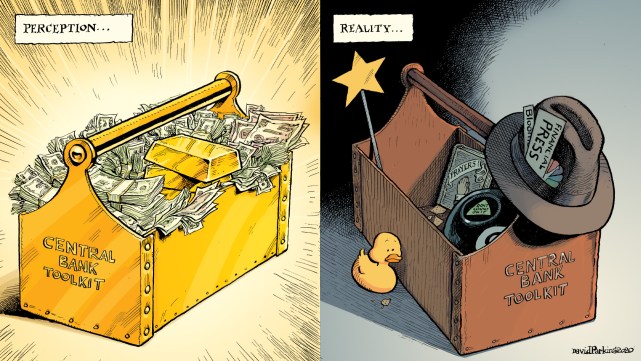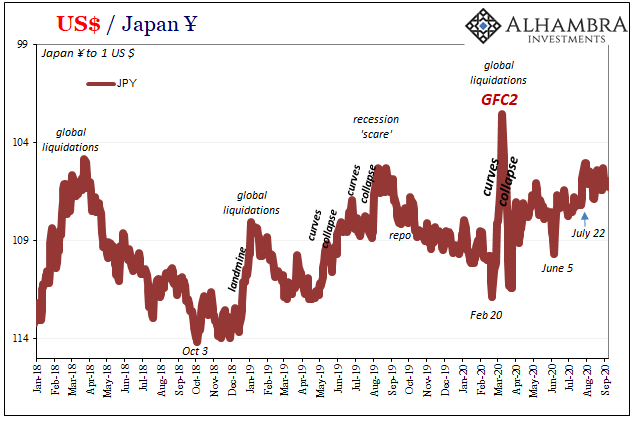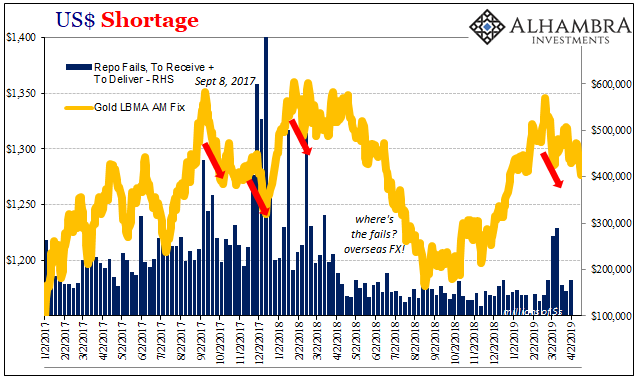Submitted by Marc Chandler, Global Head of Currency Strategy, Brown Brothers Harriman
The US dollar rose against all the major currencies in the past week. It seems clear that the greenback’s gains were not a reflection of domestic developments, though it is true that US data stands in stark contrast with nearly every other major country.
The global capital markets in general, and the foreign exchange market in particular took Cyprus developments better than most expected. The lows in most of the major currencies were seen early in the week and, consolidation or higher prices, were seen for most of the week.
Equities were heavy, but leaving aside the Nikkei, tended to finish the week with a firmer tone. Although the Italian political situation is far from clear, its bourse was the best performer among the major markets, losing only 0.1% on the week. Italian bonds rallied, with yields falling around 13 bp, which, at 4.50%, is near the lowest in a month.
With a relatively light event and data schedule, and a reasonable chance of some closure on Cyprus that removes it from the headlines, in the week ahead, we think the US dollar is poised to correct lower. Many investors use the Dollar Index as a rough and ready proxy for the US dollar in general, even though it is heavily weighted toward Europe and does not include two of the top four trading US partners (China and Mexico).
The Dollar Index actually peaked on March 14, days before Cyprus erupted, and recovered but not enough to make a new high last week. Just before the weekend, it briefly dipped below the 20-day average for the first time since early February. Initial support is seen near 82.00, but if our reading of the technical condition is correct, there is potential toward 81.50 and maybe even 81.00, if the correction gains momentum.
Sterling and the Australian dollar (the latter is not even part of the Dollar Index) appear the most constructive technically. Sterling appears to be carving out a potential head and shoulders bottoming pattern, which projects toward $1.56, which also corresponds to a 50% retracement of the decline since the start of the year. Other technical indicators lend support to this more favorable near-term outlook for sterling. We note that for the first time since the start of the year, sterling’s 5-day moving average has moved above the 20-day average.
Shifting interest rate expectations have helped the Australian dollar recover around 2/3 of this year’s decline. Thus far in March, it is the best performing major currency, gaining 2.2 cents against the US dollar. The $1.04 area,which had previously served as resistance should now serve as support. There is near-term potential into the $1.0500-30 area, though many look for a retest on $1.06.
The price action of the euro is arguably more constructive than the fundamentals. Disappointing flash PMI and German IFO survey warns that the regional economy is still contracting here in Q1 (while in comparison the US economy looks to have rebounded back to its recent trend after a dismal Q4). Yet the euro’s resilience to the poor news stream is actually a favorable technical development. We see a modest bullish divergence in the RSI, as the new low for the move early last week was not confirmed by the indicator. The single currency has scope to rise toward $1.3100-30 in week ahead.
Our caveat, which we noted last week, is worth repeating. This year, more often than not, the euro has moved in the opposite direction on Monday than it did on the proceeding Friday. The wild card of course is Cyprus and the ECB’s threat to no longer sanction any more funding from the Emergency Lending Assistance (ELA) on Monday if there is no agreement.
We have been taken a contrarian view of the yen, thinking that Abeonomics is well known and well discounted in the foreign exchange market. We think this means that the bulk of the yen’s weakness is found in the rear view mirror. The uptrend in the dollar against the yen, drawn off the mid-Nov lows, when the election was announced and the early Dec lows and late Feb lows comes in on Monday just below JPY94.00 and is rising about 11 pips a day. Looking at the technical indicators, the RSI for is difficult to read, but there is a dollar bearish divergence in the MACDs.
The US dollar spent the past week in fairly narrow trading ranges against the Canadian dollar. Consistent with a broader outlook, we anticipate a heavier tone for the greenback in the days ahead. Initial support is seen in the CAD1.0170-CAD1.02 band, which the US dollar has not traded below for a month. A break of this area could see another cent retreat. The RSI and MACDs are trending lower and the market positioning seems stretched.
We continue to like the Mexican peso from a fundamental point of view, but our reading of the technical condition warns of a slow grind at best. None of our technical indicators are suggesting a near-term reversal. We are, therefore, more inclined to selling into dollar bounces rather into new weakness. We see the MXN12.50-MXN12.60 as formidable resistance.
We share these observations on the speculative positioning in the futures market.
1. In the latest reporting period, the gross long speculative positions grew in all the currency futures we track, except the euro. There were three substantial adjustments, and by that we mean a change of more than 10k contracts. The sizable increase in the Australian dollar and Mexican peso longs may not be that surprising, but the fact that bottom pickers in sterling made a stand is unexpected.
2. Gross short positions were generally grown, though there were two exceptions, the yen and the Australian dollar. Some yen bears tossed in the towel. The downside momentum has faded over the past couple of weeks and the heightened uncertainty as the Japanese fiscal year winds down may have encouraged the profit-taking. Aussie shorts were forced to cover by the currency’s resilience. Four of the remaining currencies saw a substantial increase (more than 10k contracts) in gross shorts. Short positions were grown slightly in the Swiss franc.
3. The gross short speculative euro position is the largest of the year. The gross long position is the smallest of the year. We look for some position adjustment as the quarter winds down.
4. Although the consensus is for a weaker yen, we note that among those currency futures in which the net position is short, the gross long yen position is the largest. Even if the views are not picked up in the popular press, others appear to share our idea that much of the bear story has been discounted.
5. There is a record gross short speculative sterling and Canadian dollar position. Given sterling’s recover after the end of the CFTC reporting period, we suspect that some of the shorts were covered. The price action of the Canadian dollar was less clear.
6. The net long Australian dollar position more than doubled in the latest reporting period. The Aussie broke above the $1.04 area that had been keeping the gains in check after the reporting period ended. We suspect that this was a reflection of both new longs coming in and shorts being forced out.
| week ending March 17 |
Commitment of Traders |
|
|
(spec position in 000’s of contracts) |
|
|
Net |
Prior |
Gross Long |
Change |
Gross Short |
Change |
| Euro |
-44.9 |
-24.8 |
49.0 |
-8.5 |
93.8 |
11.6 |
| Yen |
-80.0 |
-93.8 |
55.4 |
4.2 |
135.4 |
-9.6 |
| Sterling |
-61.5 |
-49.8 |
39.0 |
10.2 |
100.5 |
21.9 |
| Swiss Franc |
-11.0 |
-13.5 |
11.1 |
4.9 |
22.1 |
2.4 |
| C$ |
-65.3 |
-53.4 |
39.4 |
2.4 |
104.7 |
14.3 |
| A$ |
54.1 |
23.3 |
101.0 |
23.2 |
46.9 |
-7.5 |
| Mexican Peso |
109.0 |
114.0 |
132.9 |
12.5 |
23.6 |
16.9 |
Are you the author?
He has been covering the global capital markets in one fashion or another for more than 30 years, working at economic consulting firms and global investment banks. After 14 years as the global head of currency strategy for Brown Brothers Harriman, Chandler joined Bannockburn Global Forex, as a managing partner and chief markets strategist as of October 1, 2018.
Previous post
See more for 4.) Marc to Market
Next post
Tags:
Canadian Dollar,
Commitments of Traders,
COT,
Currency Positioning,
FX Positioning,
Japanese yen,
Marc Chandler,
MXP,
Net Position,
Peso,
Speculative Positions






































